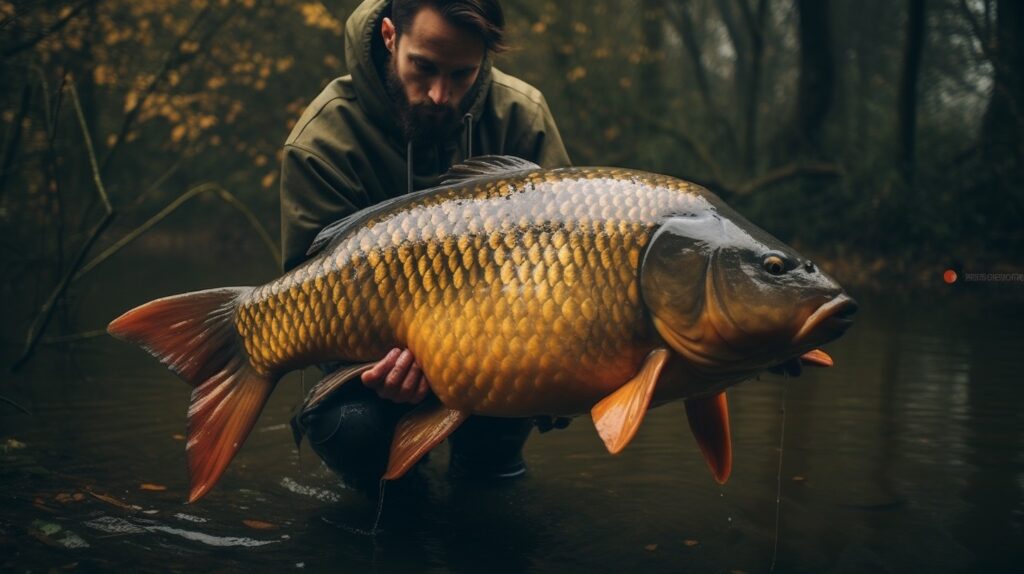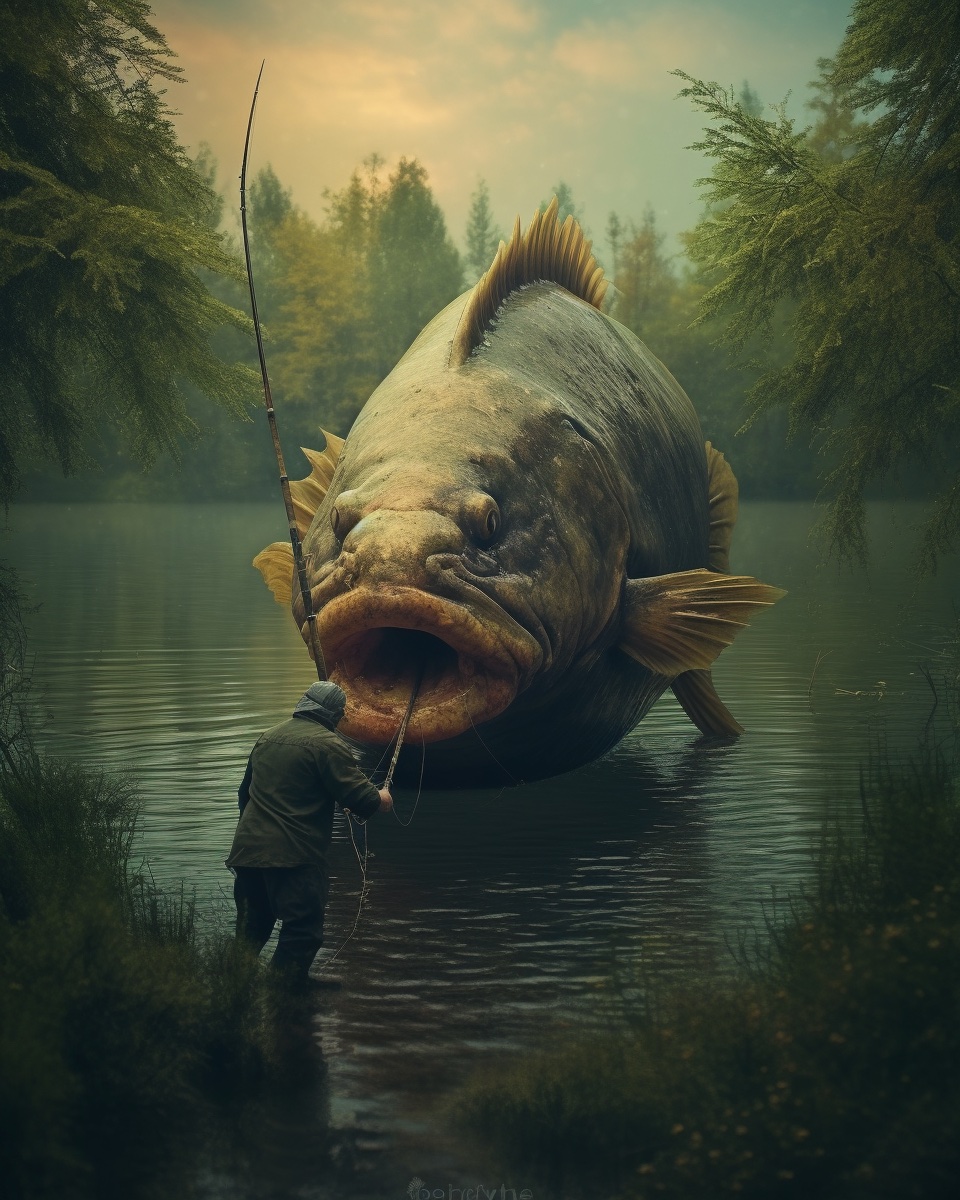Carp fishing is a recreational activity enjoyed by countless anglers worldwide. Known for their strength, size, and cunning nature, carp offer a formidable challenge that attracts both novice and seasoned fishers alike. However, to successfully reel in a carp, you’ll need more than just patience and enthusiasm. Among the many factors that contribute to effective carp fishing, choosing the right hook size stands out as one of the most critical.
Your hook forms the all-important connection between you and the fish. It’s the link that can turn a nibble into a successful catch, or see it slip away into the depths below. Hence, selecting the appropriate hook size for carp is a vital skill that can greatly enhance your carp fishing endeavors. This blog post will serve as a comprehensive guide, leading you through the nuances of carp species, their behaviors, and the recommended hook sizes for successful carp fishing.
Understanding Carp as a Species
Before we delve into the specifics of hook sizes, it’s crucial to comprehend the unique characteristics and behaviors of the carp species. This understanding will provide a foundation for why certain hook sizes are recommended for carp fishing.
Characteristics of Carp
Carp are typically large and robust fish, often weighing between 10 and 30 pounds, though they can grow much larger in optimal conditions. Two commonly targeted species by anglers are the common carp and the mirror carp.
Common carp are known for their bronze color and robust, torpedo-shaped bodies covered in a pattern of regular, tightly-packed scales. Mirror carp, a genetic variant of common carp, get their name from their large, mirror-like scales that appear randomly scattered across their bodies. Both species are similar in size, though mirror carp often grow slightly larger due to their reduced scale coverage, which allows for faster growth.
Carp Behavior and Feeding Habits

Understanding the behavior and feeding habits of carp is essential when choosing the correct hook size. Carp are omnivorous bottom feeders, often stirring up the bottom of their habitat to dislodge food. Their diet primarily consists of aquatic plants, insects, crustaceans, and other small aquatic organisms.
Carp are notoriously cunning and wary of unfamiliar objects, often investigating potential food with caution. As such, they can easily detect and avoid large or unsuitable hooks, making the choice of hook size all the more crucial for successful carp fishing. In the following sections, we will delve deeper into the specifics of selecting the ideal hook size for carp fishing.
Recommended Hook Sizes for Carp Fishing
Determining the right hook size for carp fishing requires a careful balance. You want a hook that’s large enough to effectively secure the carp, but not so large that it spooks the fish or hinders your bait presentation. Hook size can vary depending on the size of the carp you’re targeting, the type of bait you’re using, and the specific conditions you’re fishing under. Below, we’ll outline some general recommendations for both common and mirror carp.
H3: Hook Sizes for Common Carp
When fishing for common carp, you’ll likely be dealing with fish that range from 10 to 30 pounds, although carp can grow much larger in certain environments. Given this size range, you’ll typically want to opt for a hook size in the range of #4 to #8.
A #4 or #6 hook size can be a good choice when targeting larger carp or when using larger bait. These hooks have a wide gape that can securely hook and hold a large carp, and they’re big enough to handle larger bait like corn clusters, boilies, or large chunks of bread.
On the other hand, a #8 hook can be a more suitable choice when dealing with smaller carp or wary fish. The smaller hook is less likely to be detected by the carp, and it works well with smaller baits like single kernels of corn or small pellets.
H3: Hook Sizes for Mirror Carp
Mirror carp, while a genetic variant of common carp, often grow slightly larger due to their reduced scale coverage. Therefore, when fishing for mirror carp, it might be beneficial to use a slightly larger hook size.
A #4 hook size can be particularly effective for mirror carp. This size is suitable for handling larger baits that might attract the typically bigger mirror carp, and it provides a strong, secure hook hold.
Of course, if the mirror carp in your area tend to be more wary or if you’re fishing under high-pressure conditions, you might find more success with a smaller hook like a #6 or even an #8.
These are general recommendations, and the “right” hook size can vary based on a number of factors. Always be prepared to adjust your tackle according to the conditions of the day, the behavior of the fish, and your personal preferences and fishing style.
Types of Hooks Suitable for Carp Fishing
As with hook sizes, the type of hook you select can significantly influence your carp fishing success. Various hook types have different strengths and are suitable for different fishing scenarios. Let’s take a closer look at two of the most popular hook types used in carp fishing: J-hooks and circle hooks.
J-Hooks
J-hooks, named after their shape resembling the letter “J,” are one of the most common types of hooks used in carp fishing. They’re versatile, and when used correctly, can be incredibly effective.
J-hooks work well when you’re actively monitoring your rod because they require you to set the hook by pulling sharply on the line once the carp bites. This action ensures the hook embeds in the carp’s mouth, allowing for a secure hold.
The size of J-hooks used can vary, but typically sizes #4 to #8 are preferred for carp fishing. The exact size to use often depends on the size of the carp you’re targeting and the type of bait you’re using.
Circle Hooks
Circle hooks are an excellent alternative to J-hooks, particularly when practicing catch and release. The unique design of circle hooks, where the point is curved in towards the shank, means they are less likely to hook carp in the gut. Instead, they typically hook the fish in the corner of the mouth, making for an easier and safer release.
For circle hooks, sizes #4 to #8 are also commonly used in carp fishing. When using circle hooks, remember not to ‘set’ the hook like you would with a J-hook. Instead, let the fish take the bait and apply steady pressure to allow the hook to slide into the corner of the carp’s mouth.
Influence of Bait on Hook Size
The type of bait you use in carp fishing can heavily influence your choice of hook size. Let’s look at some commonly used carp baits and corresponding hook sizes.
Corn and boilies are two very common baits in carp fishing. For these, a larger hook size, such as a #4 or #6, might be appropriate. The large hook can handle the size of these baits and the often larger carp that they attract.
For smaller baits such as maggots or bread pieces, a smaller hook, like a #8, is generally more suitable. Smaller hooks are less likely to deter the carp and can be effectively hidden within these smaller baits.
Carp Fishing Tips and Techniques
Equipped with the right hooks and bait, you’re well on your way to becoming a successful carp angler. However, understanding some basic carp fishing techniques and ensuring that your entire gear setup is balanced will enhance your results.
Tips for Successful Carp Fishing
There are many techniques for successful carp fishing, including chumming, stalking, and surface fishing. Chumming involves throwing free bait into the water to attract carp to your fishing area. Stalking involves quietly walking along the bank and looking for signs of carp feeding. Surface fishing involves presenting your bait on or just below the water’s surface, which can be particularly effective in the warmer months when carp come to the surface to feed.
Choosing the Right Carp Fishing Gear
In addition to choosing the correct hook size and type, it’s also essential to pair your hook with the appropriate fishing line, rod, and reel. A balanced setup is key to casting accurately, detecting bites, and successfully landing carp.
For example, your fishing line’s strength should match the size of the carp you’re targeting. A line that’s too weak may break when a large carp bites, while a line that’s too strong may be visible
to the carp and deter them from biting. Similarly, your rod and reel should be robust enough to handle the weight of the carp you’re aiming for.
Remember, successful carp fishing requires patience, the right knowledge, and balanced gear. Keep these points in mind, and you’re likely to enjoy fruitful carp fishing sessions.

